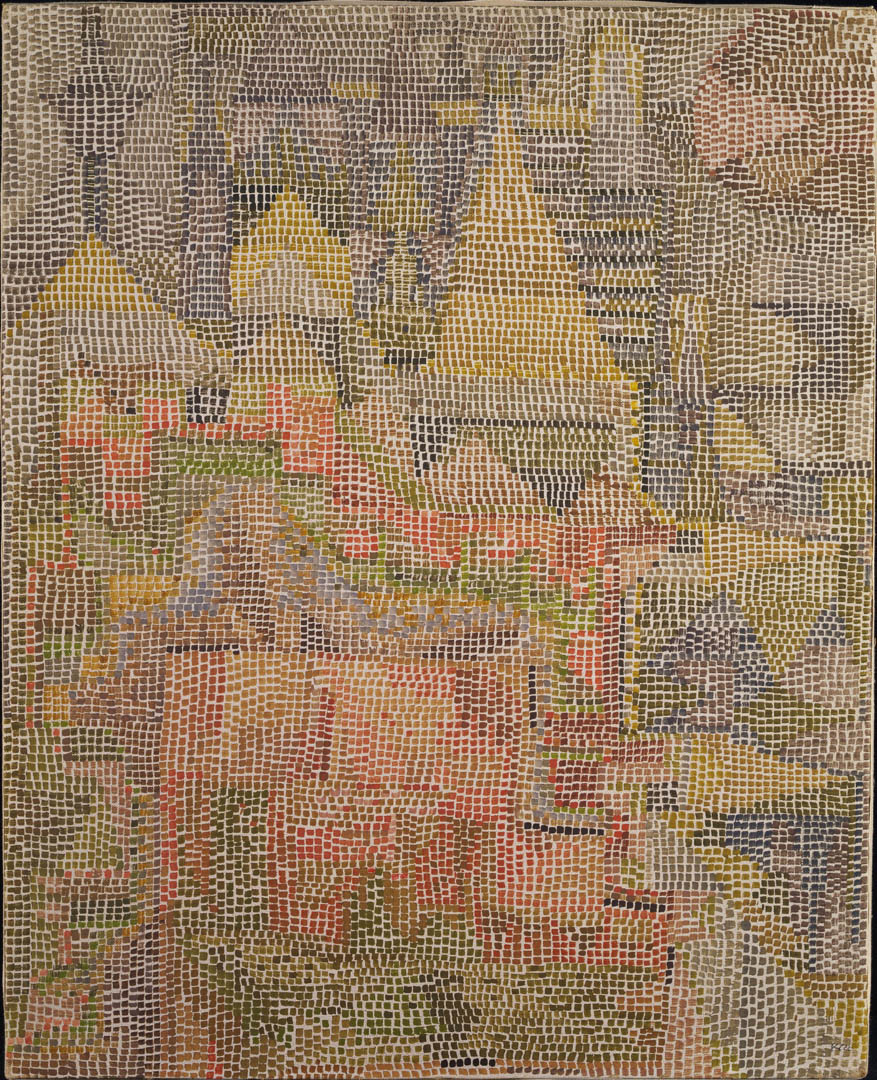This was an eye opener ...
I've been to lots of pay-to-get-in exhibitions at the Tate over the years. Some of which I've gone to twice (and paid twice); Miro, Richter from memory. I've read lots about Klee. So, I wasn't expecting much. Just a diverting afternoon ...
But, the pictures are astounding. Initially, as you walk into the first room your initial expectations are fulfilled. It's just a timeline of Klee's life. The second room isn't much better. Lots of little pictures. Not like Miro. Not like Richter. Little pictures ...
Take "Castle Garden", for example
It's about 50 cm by 60 cm. And this is one of the bigger ones. From a metre away it's interesting; no more. Not unlike the photograph above. But from a few centimetres, it's amazing ...
This image (of a Tunisian townscape?) is made from intricately painted patches, each a few millimetres square. With no apparent guidelines to keep the observed super-shapes in place. If this had been 3 metres by 4 metres (as if painted by Miro or Richter) it would have been obvious to everyone that passed by how amazing it is. But you have to look closely. And not many people were doing that ...
All of Klee's early work is like that.
I was staring at a corner of this picture when an elderly gentleman said, excuse me, I can't see. He was standing back. I said, I thought we took turns. I finished looking, and stood back. He didn't move in. He looked. He moved away. He missed the picture.
Klee was an experimentalist. In this exhibition you can follow his explorations. Some images are geometric, some are surrealist, he experiments with colour and with application. Some images, which seem superficial from a distance, on closer examination reveal the application of a technique that, for Klee, was a departure.
For example, some images are scratched into the surface of a painted layer, revealing the prepared layer beneath. Some images are created by "printing" a drawing onto a prepared surface using an oil-transfer technique (i.e. creating "carbon-copy" paper by pasting oil paint onto the back of a drawing to be traced). And many more techniques, that make this exhibition not just a joy to visit, but an education in drawing and image making.
So many questions arise when looking at these pictures. About how they were made and, of course, about what Klee was trying to communicate. The titles help of course. Also the fact that the exhibition has been arranged chronologically, so you can see how his ideas have developed.
You can also see the influence he had on others that came after, such as Mondrian and de Stijl, Miro and Matisse; and the influence that he must have had on Picasso, as indeed Picasso must have had on him.
I realise now that by the time I reached the later galleries, I was in overload and didn't give the later pictures the attention they deserved. At first glance, I didn't like them as much as the earlier works. That has to be wrong. I was also hoping to detect the influence of Klee's musicianship on his painting. I wasn't able to dectect any influence. This too has to be wrong. There is so much to see here that this is surely another pay-to-get-in exhibitions at the Tate that I will have to pay-to-get-in to a second time.

